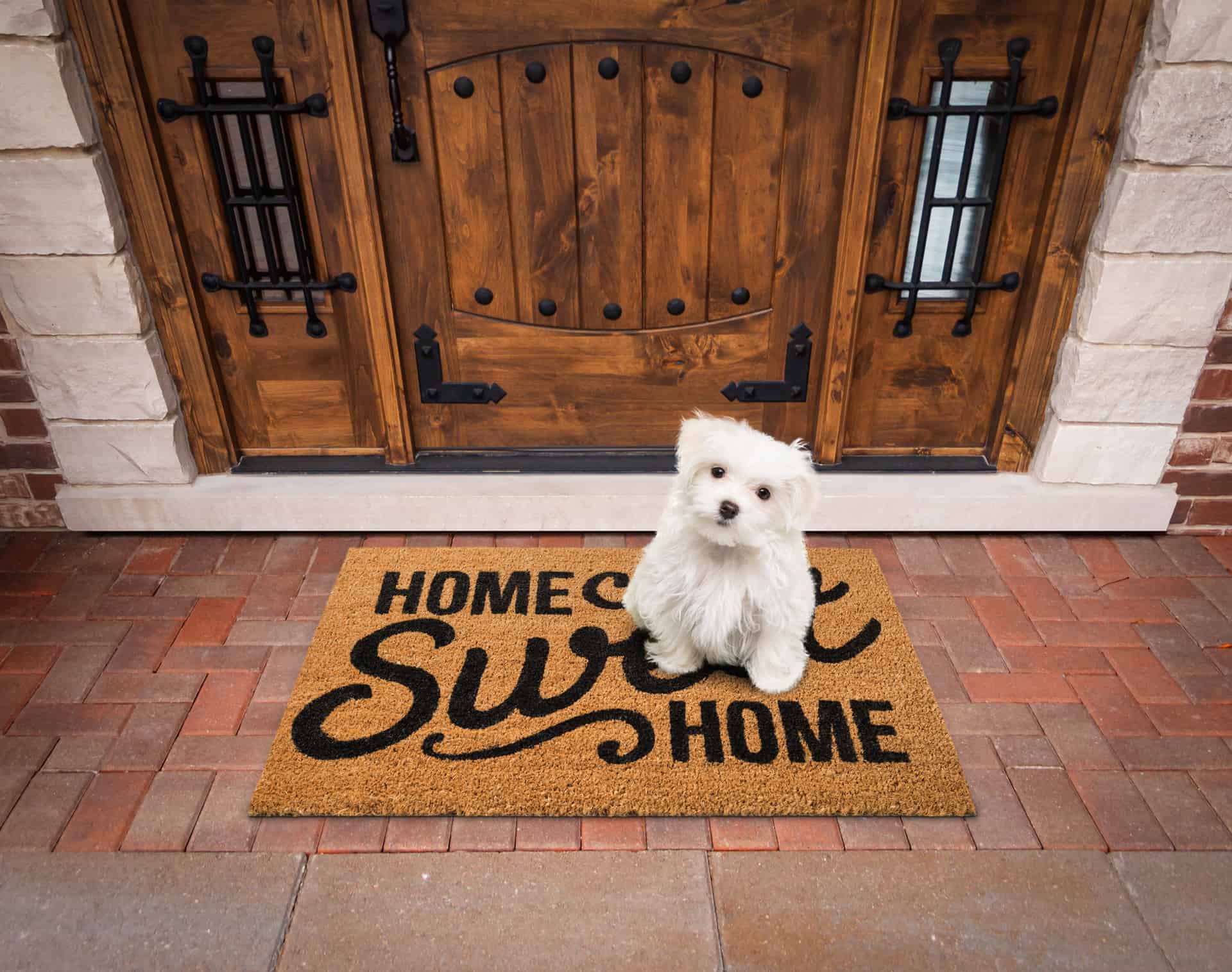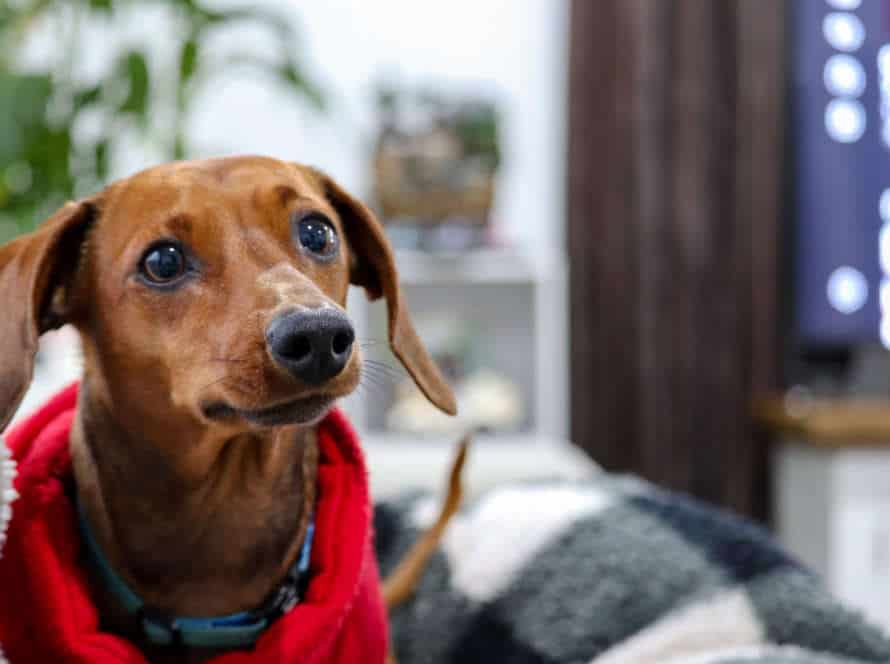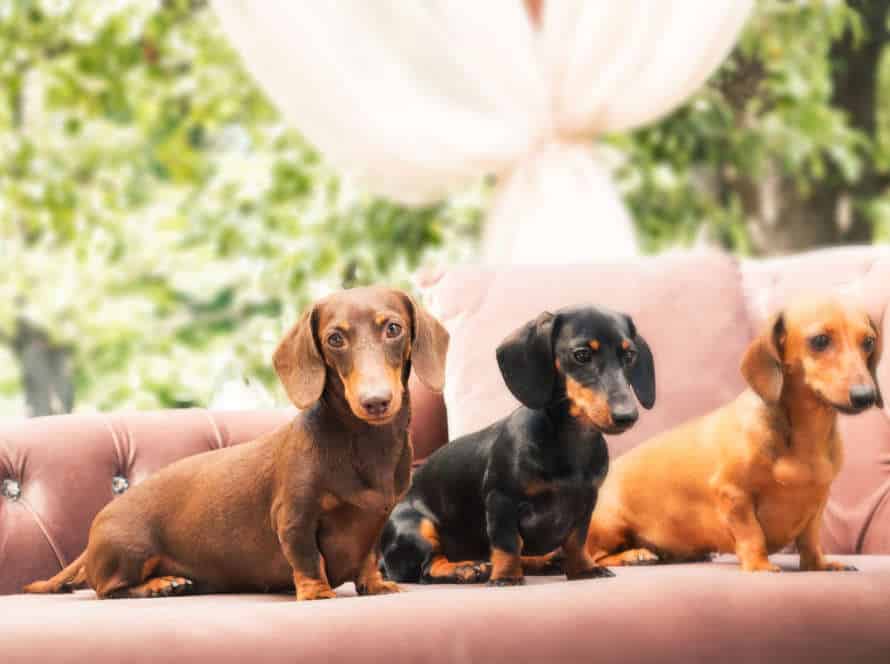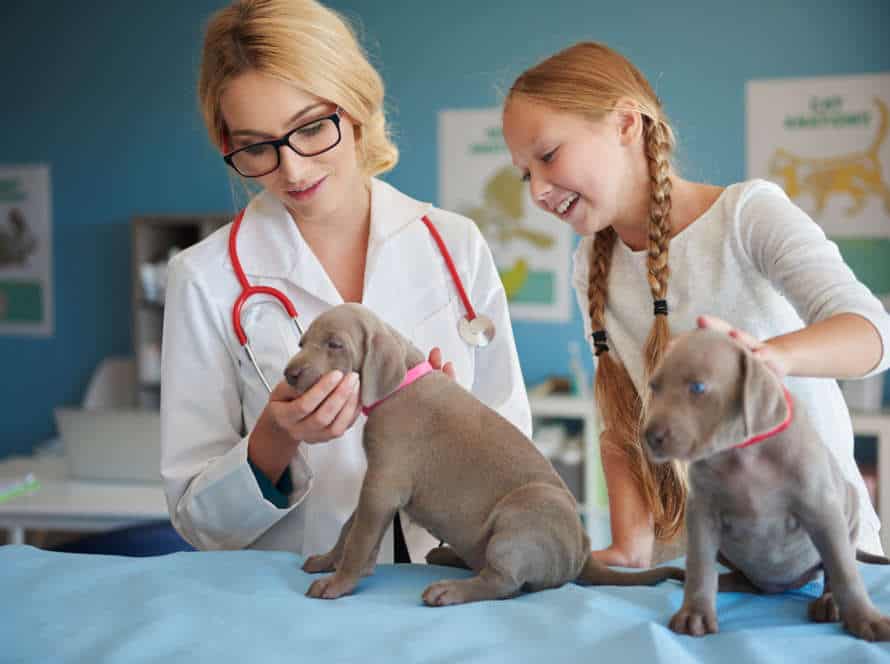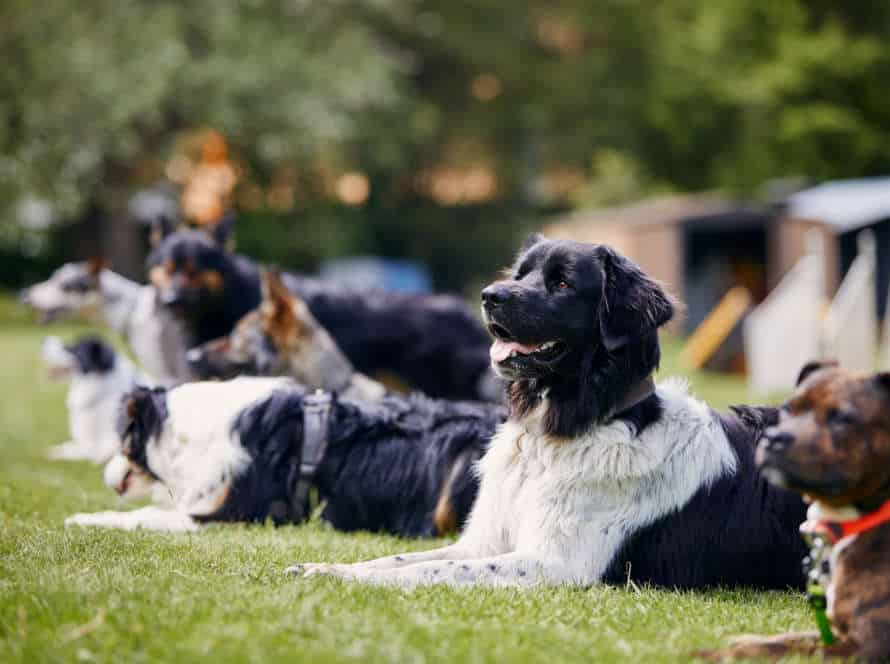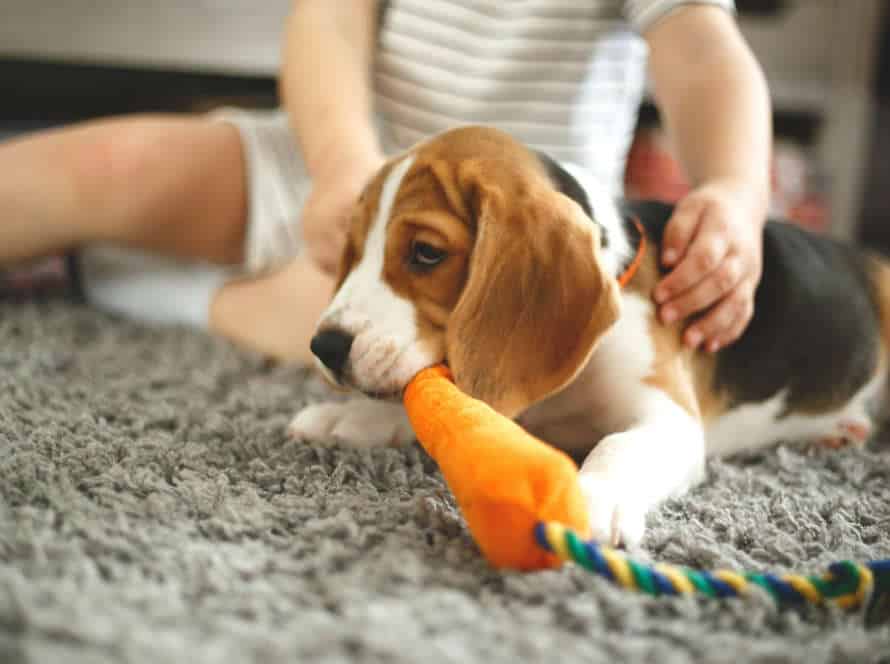Welcoming Visitors: Teaching Your Puppy Manners
Training your pup to be on their best behavior when visitors come is essential. To ensure everyone is happy and your pup behaves, here are some tips:
- Get your pup used to different people, dogs, and places.
- Teach them basic commands like “sit,” “stay,” and “come.”
- Set aside a special area for them to chill out away from guests.
- Keep them on a leash until they learn to stay calm.
- Reward good behavior when your guests are around.
Remember, consistency and patience are key when teaching your pup manners!
Preparing for Visitors
Visitors, whether they’re friends, family or strangers, can be thrilling yet tricky for your pup! Preparing your pup for visitors is essential for their well-being, as well as the safety of those who enter. Teaching your pup how to properly welcome and interact with visitors is important for their manners.
Let’s explore some steps for prepping for guests!
- Train your pup to be well-behaved and respond to basic commands such as sit, stay, come and leave it.
- Socialize your pup with different people and environments to help them become comfortable around strangers.
- Set boundaries and rules for your pup, such as staying in a designated area or not jumping on visitors.
- Inform your guests about your pup’s rules and how they can interact with them.
- Provide distractions for your pup, such as toys or chews, to keep them occupied and prevent any unwanted behavior.
Socializing your puppy
Socializing your puppy is essential. To ensure they learn to interact with people and other canines in a positive way, be sure to plan for visitors and teach them manners. Here are some tips:
- Start early – start socializing your puppy as soon as you can.
- Treats – reward them for good behaviour around visitors.
- Commands – teach basic commands like ‘sit’ and ‘stay’ to control their behaviour.
- Introduce – introduce them to different types of people, including children and adults.
- Walks – take them out in public places to help them get used to different sounds and sights.
By following these tips, you can socialize your puppy and help them develop good manners around guests.
Pro tip – be patient and consistent with training and always supervise your puppy when people visit.
Teaching your puppy basic obedience commands
Teaching your pup basic obedience commands? Essential! Here are three to start:
- Sit: Hold a treat near their nose. Move your hand up. Let their head follow the treat. Then their bottom goes down. Give them the treat and praise them when it does.
- Stay: Ask your pup to sit. Hold up a hand and say ‘stay’. Take a few steps back. Reward them with a treat. Repeat multiple times for longer stays.
- Come: Call their name. Say ‘come!’ in a friendly tone. Run away. When they come, reward and praise them.
Consistency, positive reinforcement, and patience? All key in obedience training. Practice with your pup regularly.
Creating a safe space for your puppy
Creating a safe spot for your pup is a must, especially when expecting visitors. It’s also essential to teach your pup good manners and behavior around them. Here are some tips:
- Pick a corner or a crate as a special area for your pup, where they feel secure.
- Train your pup with basic obedience commands, like “sit,” “stay,” and “heel” before introducing them to guests.
- Let your pup socialize with other people, animals, and situations.
- Supervise them closely while they interact with guests and provide rewards for good behavior.
- Set clear limits and rules for visitors on how to interact with your pup.
By setting a secure space for your pup and teaching them manners, you can make sure both your pet and visitors feel comfortable and at ease.
Introducing Visitors
Socializing your puppy? A must! Introduce them to people, let them interact. It’s a great way to give your pup good manners when meeting strangers.
How to properly introduce pup to visitors? How to maintain good behaviour? Let’s explore!
Greeting at the door
Greeting your pup politely when guests come to your house is important. Here’re some tips for teaching them good behaviour:
- Start with easy commands like ‘sit’ and ‘stay’.
- Train them in a low-stress environment using fake visitors like friends and family.
- Gradually expose them to new people, while using the same commands.
- Be patient and consistent; it takes effort and time for them to learn.
- Reward them for good behaviour with treats and reinforcement, so they repeat it next time!
Proper leash behavior
It’s essential for any dog owner to learn proper leash behavior to make walks enjoyable and bond with their pup. Here’s what you need to remember:
- Start with a comfy leash. Retractable leashes won’t give enough control, so go for a standard one.
- Practice indoors first. Make it a short walk and use cues like “heel” and stopping at doors, curbs or intersections.
- Move to outdoor walking. Start with less crowded areas, then work up to busier ones. Patience is key.
- Distract if needed. Walk your pup next to you and redirect them with a toy or treat if they pull or wander.
- Reward good behaviour. Praise, treats and toys when they follow your lead.
- Supervise interactions with visitors and other dogs and reward good behaviour to teach them manners.
Calming exercises
Introducing visitors to your pup? Calming exercises can help! Teach them proper manners and make sure they feel welcome. Here’s how:
- Make a designated area for pup to greet visitors. Use a baby gate or playpen.
- Ask visitors to ignore pup until it calms down. No jumping!
- Reward pup for calm behavior with treats or praise. Positive reinforcement is key.
- Do these exercises regularly. Over time, pup will learn to control its excitement and behave when visitors arrive.
Teaching Manners
Teaching your puppy good manners is essential for raising a healthy, happy pup. For instance, teaching them to greet visitors politely is key. It helps ensure a successful bond between pup and visitor. Let’s examine further the advantages of teaching your puppy manners. It will make your home a safe and pleasant place for all.
No Jumping
Puppies often have a behavior problem of jumping on guests. But, with training, you can teach your pup to greet people politely without jumping. Here are some tips:
- Start with basic commands such as “sit” and “stay.” Practice these commands with your pup and reward them with treats or praise when they obey.
- Encourage your guests to ignore the puppy until they are still and have all four paws on the ground.
- If your pup jumps, turn away and say “no” in a firm yet calm voice. Avoid yelling, pushing, or hitting as this will not help.
- Once your pup is calm, let your guests pet them and give treats.
With patience and training, you can teach your pup to welcome visitors without jumping.
No Barking
It’s important to teach your pup to not bark when guests come over. It can be tricky, but it’s needed for a peaceful home. Here’s how to do it:
- Train the ‘quiet’ command with treats or toys.
- Reward good behaviour with treats and compliments.
- Get your visitors involved. Ask them to ignore your pup until it’s calm. Then give it praise.
- Use a leash or put pup in a separate space if it gets too excited.
- Consistency is key. Make sure everyone in your home follows the same training plan.
No Begging
Teaching manners to your pup is a must! To create a well-behaved, social pup, focus on how they greet visitors.
- Leash them up to control their movements and prevent them from jumping or running.
- Teach ’em basic commands like “sit” and “stay”.
- Reward good behaviour with treats or praise.
- Practice regularly to reinforce these behaviours. They’ll learn that polite greetings are rewarded, not begging for attention!
It takes time and patience, but be consistent with positive reinforcement. Your pup will become an amazing member of the family.
#ProTip: Keep training sessions fun and short to keep ’em motivated.
Positive Reinforcement Techniques
Teaching your pup to say “Hi” right is key. Positive reinforcement can help you reach this goal. This method gives rewards when pup does the right thing. Here are some tips on how to use Positive Reinforcement to train your puppy’s manners with visitors.
Treats and verbal praise
Treats and verbal praise are great ways to teach your puppy how to behave when people come over.
Treats: Give them small, healthy treats when they do something good. Have treats ready to reward them if they don’t jump up on people.
Verbal Praise: Say positive words such as “Good boy/girl!” in an upbeat voice. This will show your pup that they’re doing well.
Pro tip: Be consistent with your praise and treats. This will help your puppy associate good behavior with rewards. That way, it’s easier for them to do it again in the future.
Crate training
Crate training is a positive technique to help pet owners train their puppies. It provides a safe space for them while you’re away and a comfy spot to relax.
To effectively crate train your pup:
- Introduce them to the crate slowly and make it a pleasant experience with treats and toys.
- Gradually increase the time they spend inside it.
- Place the crate in an area where they can see and hear you.
- Use positive reinforcement like praising and treats for good behavior.
- When visitors come, use the crate to keep them calm and reward them for being well-behaved. This teaches them that good behavior is expected, even in new situations.
Pro tip: Be patient and consistent with the training. It could take some time for the pup to feel comfy and secure.
Consistency and repetition
Consistency & repetition are essential for positive reinforcement when training your pup to greet visitors politely. Here’s what to do:
- Consistency: Set clear rules for pup behavior. No jumping, no barking. It is important that everyone in the household follows the rules.
- Repetition: Practice greeting visitors regularly. Treats & praise to reward pup.
- Patience: Be patient. Consistency & repetition will help reinforce pup’s good behavior over time.
Pro Tip: Regular training sessions help pup learn good manners & reduce anxiety when visitors come. Keep it short & fun – don’t overwhelm pup.
Troubleshooting
Training a pup can be tricky. Especially when visitors come over. This article can help!
We’ll give you tips on understanding your pup’s body language, as well as using positive reinforcement techniques. Ready? Let’s go!
Navigating off-leash dogs
Navigating off-leash dogs can be a challenge for pet owners, especially those with puppies who are still learning socialization skills. Here are some tips to remember:
- Stay calm and composed. If an off-leash dog approaches, don’t show fear or anxiety. Focus on your breathing and body language.
- Stay aware of your surroundings. Check for any off-leash dogs when you’re out walking with your puppy, especially in parks or other public spaces.
- Train your puppy to come when called. This can help you call your puppy back to you if an off-leash dog approaches.
- Carry a deterrent, such as a whistle or pepper spray, to ward off aggressive off-leash dogs.
Pro tip: Socialize your puppy early. This can help them deal with new situations, including unexpected encounters with off-leash dogs.
Visitors who are scared of dogs
Greeting visitors with a puppy that scares some can be tough. Here are some tricks to help train your pup and make your visitors feel more at ease:
- Socialize your puppy from an early age. Expose them to different people, places and situations.
- Train your pup basic commands like sit, stay, come and leave it.
- Use positive reinforcement, like treats and praise, to reward good behavior.
- Give visitors a safe space, like a different room or a baby gate. This is where they can stay while you introduce the pup to them.
- Supervise your pup’s interactions with visitors. Be ready to intervene if needed.
- Let visitors approach your pup without forcing them.
- Gradually increase the duration and complexity of interactions with visitors as they become more comfy.
Pro tip: Don’t forget to teach visitors how to act around your pup too, such as not making direct eye contact and avoiding sudden movements.
Aggressive behavior
Aggressive behavior in puppies is a common problem. Training them with good manners when visitors come can help. Here’s how:
- Start by teaching obedience to set boundaries and expectations.
- Introduce your puppy to new people and places gradually, rewarding good behavior with praise and treats.
- Use a leash or crate to control their behavior and stop them from reacting aggressively.
- If they do show aggression, say “no” or “stay” and remove them from the situation.
- Consistency is key – make sure everyone uses the same techniques and reinforces good behavior.
Pro Tip: Socializing your puppy makes them more likely to be friendly and behave around guests. Expose them to new people, pets, and environments from an early age.
Note: Please keep in mind that this article topic is related to dog training which requires practical knowledge. This outline outlines only the basic headings to guide the flow of the article, and the actual content should be written based on practical dog training experience or by referring to expert dog trainers for accuracy in information.
Note: This article is only an outline. For accurate and effective dog training, please consult expert dog trainers.
Here is a basic outline:
- Socialization: Teach pup to be sociable and comfortable around new people and in new environments.
- Basic commands: Teach pup sit, stay, come, and leave it.
- Reinforcement: Use positive reinforcement to reward good behavior and deter bad behavior when guests arrive.
- Containment: Provide a safe and secure area such as a crate or playpen to prevent jumping or unwanted behavior when visitors come.
- Leash training: Help prevent jumping and other unwanted behavior when greeting visitors.
For in-depth knowledge and practical training techniques to raise a well-behaved, obedient, and socialized pup, please seek guidance from expert dog trainers.
Frequently Asked Questions
Q: How do I introduce my puppy to visitors?
A: The best way to introduce your puppy to visitors is to have them come in slowly and quietly, while you hold your dog on a leash. Once your puppy has calmed down, you can allow them to greet your visitors.
Q: What if my puppy starts jumping on visitors?
A: If your puppy starts jumping on visitors, firmly tell them “No” and gently push them down. It is important to redirect their behavior and encourage them to sit calmly before greeting visitors.
Q: Should I allow my puppy to greet all visitors?
A: Not necessarily. If your puppy seems anxious or uncomfortable around a particular visitor, it is best to keep them separated until your puppy feels more comfortable.
Q: What if my puppy doesn’t like visitors at all?
A: If your puppy is consistently aggressive or fearful towards visitors, it may be best to seek help from a professional dog trainer or behaviorist. They can help address underlying issues and teach your puppy how to behave appropriately around visitors.
Q: What can I do to help my puppy feel more comfortable around visitors?
A: You can socialize your puppy early on by exposing them to different people and situations. It is important to reward your puppy for good behavior and create positive associations with visitors.
Q: How can I prevent my puppy from barking at visitors?
A: You can teach your puppy alternative behaviors, such as sitting quietly or going to their bed, when visitors come over. It is important to reward them for good behavior and be consistent with training.

